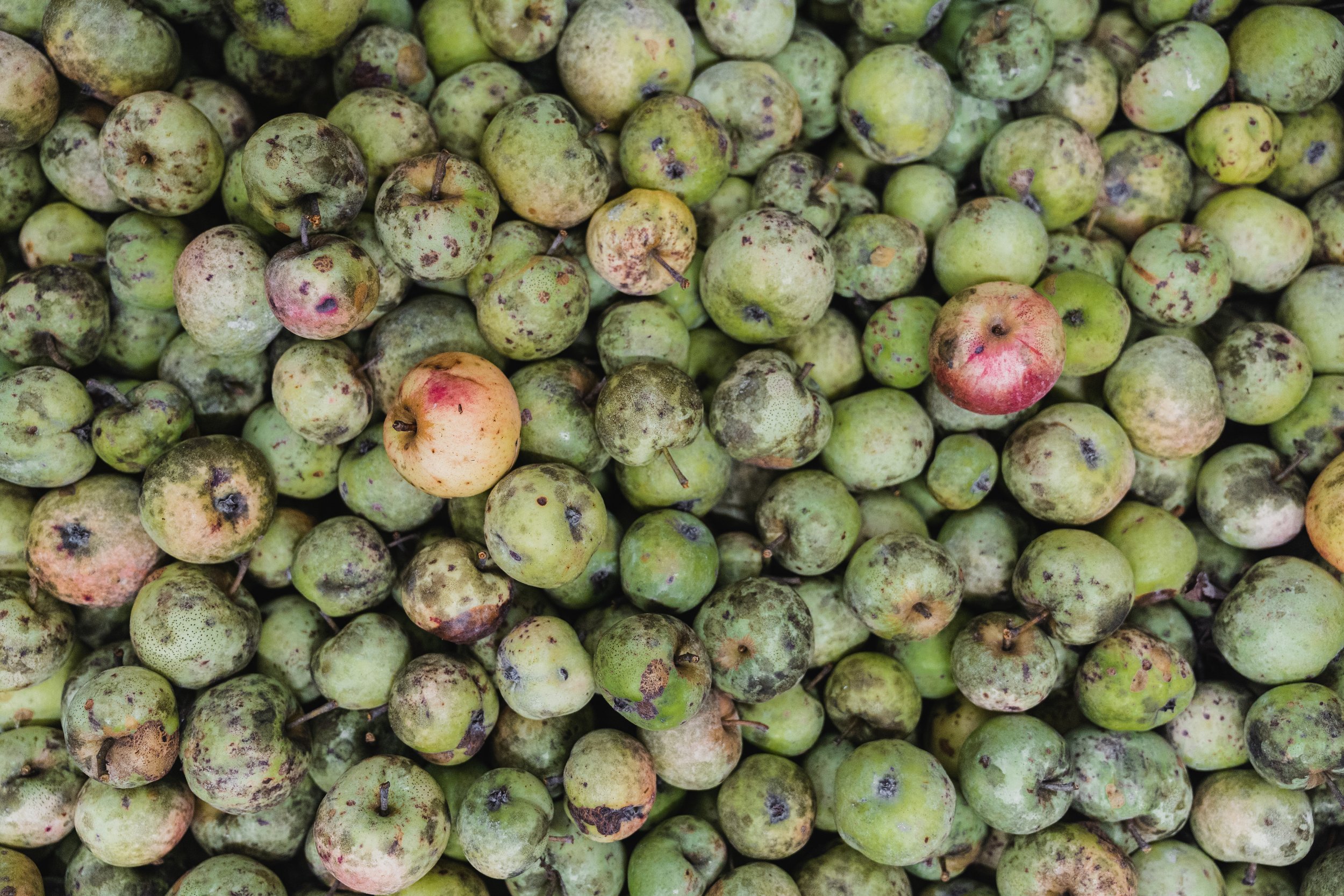The Beauty of Ugly Cider Apples
Why should unattractive apples make more delicious cider? Seminary Hill’s cider master Stuart Madany shares three reasons why they’re some of the best cider apples.
A friend of a Seminary Hill team member told us he saw photos of bad-looking apples on our website. Immediately I replied, "Ah, that's because he doesn't understand the beauty of ugly cider apples!" While we don't necessarily seek out the ugly apples, there are three reasons why they’re some of the best cider apples.
Variety Selection
Our picture of what makes an apple appealing may date from around 1930. At least that's what Tom Burford, whose family had been orcharding for 300 years, told me a few years back. He said that's when the Stark Bro's started publishing their photograph-packed mail order catalog of fruit and nut trees, berry bushes, and garden plants in color. He said that many people marked that as the moment when people started to value the appearance of produce above the taste.
So, at this point, it's just received knowledge (and what we're used to seeing in the grocery store growing up and in all kinds of media) that a good apple is a beautiful apple. And that, more specifically, a beautiful apple has a particular set of characteristics. It's highly colored, has a regular shape, has smooth, shiny skin, and usually is large.
You might be surprised to learn that there are tens of thousands of apple varieties. No one knows how many. But in the grocery store, we probably don't see more than 20. It's partly due to larger growers, increased efficiency, and lower risk, but it also involves selecting the apples that can look big and beautiful dependably. Now that we expect this version of visual perfection, most growers can't take a chance on offering us an apple that looks unexpected.
But with cider, we don't see the apple. We get to experience the taste and aroma, see the color of the juice and feel the acid and tannins on our palates. So that beauty mostly isn't visual, at least not of the whole apple. This fact leaves cider makers, those making "orchard cider" or "harvest cider" (cider made from apples grown explicitly for cider), to select varieties that have excellent characteristics for making cider, primarily tannin, aroma, and acid. In other words, inner beauty.
Variety selection is the single most defining variable of a cider. Being freed from the constraint of appearance lets us focus on the experience created by what's in the juice.
Minimizing Orchard Interventions
The second reason to celebrate blemished-looking apples is that we avoid the need to take preventative steps to prevent wholly cosmetic issues. Sooty blotch and flyspeck are the names of gray smudges and groups of dots caused by fungal colonies that appear on the outsides of apples. They don't look great, but they are entirely harmless. They don't make the apples rot, and they don't alter the taste, interfere with fermentation, or damage the tree. They also don't fit our picture of the perfect apple.
Our late friend Michael Philips even suggested that tannins are part of the plant's natural defenses and that a bit of fungus can even give it a boost. So smudgy cider apples are beautiful in that we introduced nothing unnecessary to the orchard. And they might even have boosted the phytonutrients. Further, we wasted no apples simply because they were small or misshapen.
“Sweating”
Finally, some cider apples require sweating (being held in cool to cold storage for usually 1-4 months) to fully develop their flavor. Newtown Pippin is the prime example of this group of apples. Its flavor is so-so at harvest, but it is one of the best apples to eat on the planet in January and an excellent cider apple. Sometimes sweated apples will lose enough water through evaporation in storage that the skin will look subtly less taught. They give an impression of less freshness, but they are actually at their peak inside.
Some people think this transformation is just starch converting to sugar (completing the ripening process). However, I have carefully measured starch to make sure to pick at full ripeness and still witnessed the remarkable transformation that mysteriously occurs inside the apple.
Ready to try Seminary Hill cider?
When it comes to cider apples (and so many things in life), our concept of beauty doesn't often align with the reality of beauty. Next time you're sipping an orchard cider, take a moment to consider the beauty of what's in the glass and imagine the varied sizes, shapes, colors, and skin textures of the apples that went into it. If you don't have any orchard cider on hand, stop by the The Tasting Room at Seminary Hill, head to our online shop, and check out our cider subscription club.

